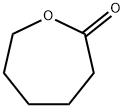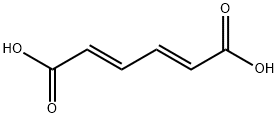
1-Hexanol synthesis
- Product Name:1-Hexanol
- CAS Number:111-27-3
- Molecular formula:C6H14O
- Molecular Weight:102.17

142-62-1
480 suppliers
$15.00/25mL

111-27-3
545 suppliers
$5.00/25g
Yield:111-27-3 98.3%
Reaction Conditions:
with water in aq. phosphate buffer at 20; pH=7.4;Electrolysis;Inert atmosphere;Enzymatic reaction;
Steps:
4. Macroelectrolysis of Carbonyl Compounds on PQQ-enzyme Multi-immobilized Electrodes
Macroelectrolysis was conducted on a Hokuto Denko Model HABF-501. Twenty mL of 250 mMformate/100 mM phosphate buffer solution (pH 7.4) was electrolyzed with the PAA- and PAAc-coatedGF electrode multi-immobilizing PQQ, Dp, NAD+ and ADH (1.0 x 1.0 x 0.5 cm) in an H-typetwo-compartment cell separated by a cation exchange membrane (Nafion 117) at the constant potential of-0.65 V vs. Ag/AgCl under a nitrogen atmosphere. During electrolysis, the substrate and products wereoccasionally analyzed by gas chromatography (GC, CP-cyclodextrin-B-2,3,6-M-19, 0.25 mm x 25 m /raising temp 3 °C min-1 from 80 to 150 °C, inj. temp 200 °C, detc. temp 240 °C) and high performanceliquid chromatography (HPLC, CHRALCEL-OD, 0.46 mm x 25 cm / column temp 30 °C, flow speed:0.5 mL min-1, solvent: hexane:isopropanol = 95:5). The carbonyl compound was identified as thereaction products by comparing its retention time of GC and HLPC with an authentic sample.
References:
Kashiwagi, Yoshitomo;Ono, Tetsuya;Yoshida, Kentaro;Ito, Toshinori;Sakurai, Nobuki [Heterocycles,2018,vol. 96,# 7,p. 1216 - 1225]

123-66-0
353 suppliers
$10.00/5g

111-27-3
545 suppliers
$5.00/25g

106-70-7
259 suppliers
$14.00/5g

111-27-3
545 suppliers
$5.00/25g


